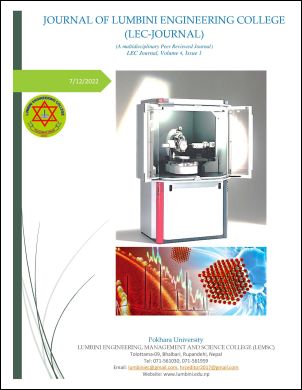Festival Induced Air Quality Perturbation over an Urban Center in Eastern Nepal
DOI:
https://doi.org/10.3126/lecj.v4i1.49358Keywords:
aerosol optical depth, sun-photometer, MODIS, TROPOMI, pollutionAbstract
An attempt has been made to investigate the changes in the characteristics of aerosol optical properties and a columnar load of carbon monoxide (CO) induced during the Dashain celebration 2018 over Birtamode, Nepal. Ground-based measurements of Aerosol Optical Depth (AOD) were carried out using a Microtops II sun-photometer during 13th to 25th Oct, 2018. AOD values on days before Dashain were in the range of 0.6 which increased above 1 attaining a maximum value of 1.6 on 19th. The AOD values started dropping below 1 on 24th, attaining a daily average of 0.64. The peak values on the respective days were also captured by Moderate Resolution Imaging Spectroradiometer (MODIS) AOD retrievals. A similar pattern was observed with the TROPOspheric Measuring Instrument (TROPOMI) CO column with peak value on the 19th. The air mass trajectories show that the increase in the AOD and CO values is of local origin and the CAMS GFAS wildfire flux of CO and PM2.5 show no change during the study period. However, the spatial analysis of AOD shows that the increased values are of regional nature. The results highlight the necessity of installation of low-cost air quality sensors in the region and utilization of aerosol and trace gaseous products derived from satellite remote sensing instruments at high temporal resolution and the application of chemical transport models.
Downloads
Downloads
Published
How to Cite
Issue
Section
License
Copyright (c) 2022 LEC Pokhara University

This work is licensed under a Creative Commons Attribution-NonCommercial 4.0 International License.
This license allows reusers to distribute, remix, adapt, and build upon the material in any medium or format for non-commercial purposes only, and only so long as attribution is given to the creator.




